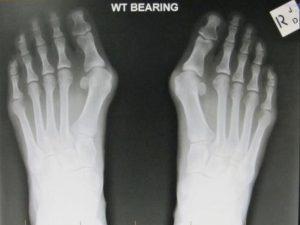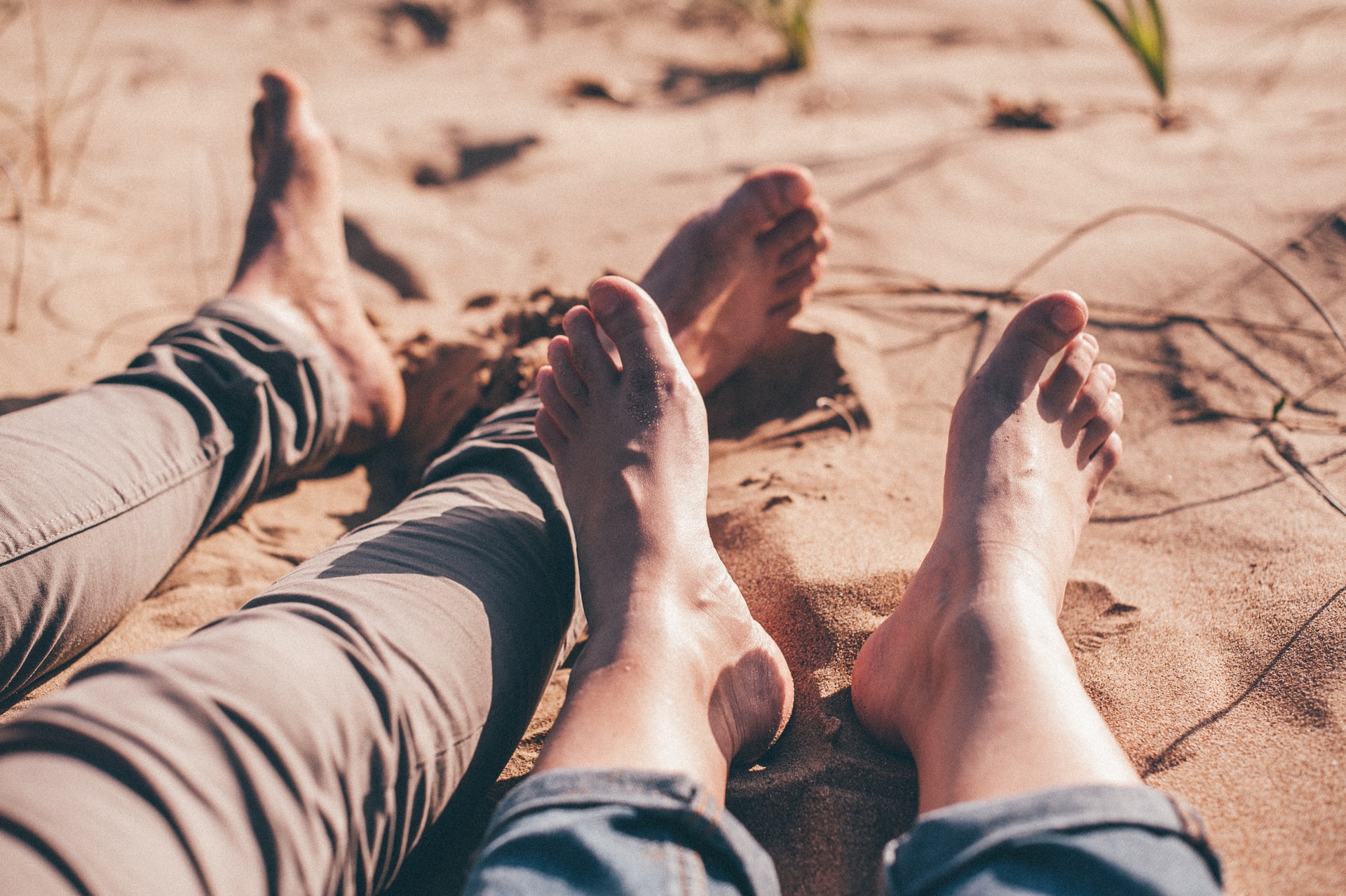Hallux valgus/bunions are a common foot condition that can cause significant pain and loss of function. I understand the importance of our foot health all too well as a Physiotherapist.
Correct foot and ankle function help us to gain sufficient balance, strength and mobility. Therefore, even the smallest of injuries can throw these things off course. I underwent bilateral (both sides) bunion surgery in October 2011, following years of pain and functional limitations.
What are bunions/hallux valgus and how are they caused?
Hallux valgus refers to the outward deviation of the big toe. The ‘bunion’ refers to the bony lump that subsequently forms. Arthritis can develop in the affected joint due to the unnatural angle of the big toe.
Hallux valgus is thought to be genetic in nature and is usually more common in females. Other contributing causes include:
- Ill-fitting footwear
- Altered biomechanics
- Trauma to the foot or toe
How are bunions/hallux valgus diagnosed?
An x-ray will determine the exact angle of this joint and the extent of bone damage. This will give your Physiotherapist a good idea as to whether you may require a surgical opinion.

How does hallux valgus affect a person?
In addition to osteoarthritis, secondary effects of hallux valgus may include:
- Poor balance
- Altered gait patterns and subsequent injuries
- Pain
- Difficulty in fitting shoes
- A feeling of embarrassment from a cosmetic standpoint
Can you prevent or treat hallux valgus conservatively?
A number of treatment options are available, depending on the extent of hallux valgus. Reducing the associated pain and improving functional capacity are the goals of these treatment methods. These can include:
- Footwear modification
- Toe splints/separators
- Activity modification
- Strengthening exercises for the foot and ankle
What surgical intervention is required for hallux valgus?
An Orthopaedic Surgeon may suggest surgery as the best course of action following examination. In addition to reducing pain and improving appearance, surgical intervention can reduce the secondary effects of hallux valgus.
I personally had a procedure called a ‘scarf osteotomy’ which changed the orientation of my big toe joint and secured it with metalware.
Recovery following hallux valgus surgery is extensive and involves a period of non-weight bearing. I wore moon boots and was only able to bear weight through my heels for six weeks.
A follow-up X-ray is ordered postoperatively which ensures adequate alignment and healing has occurred.
What are the risks of hallux valgus surgery?
The patient must understand the risks and benefits prior to the surgery, as per any surgical intervention.
Examples of known hallux valgus surgery risks include:
- Heightened pain or altered sensation around the big toe
- Hallux valgus reoccurence (10-55% likelihood)
- Under or over-correction (the toe can angle the opposite way)
- Complex Regional Pain Syndrome (a form of chronic pain)
What rehabilitation is required following hallux valgus surgery?
Hallux valgus surgery requires a period of rest and rehabilitation, which will depend on your healing, pain levels and post-op goals. I had twice-weekly Physiotherapy as I was determined to resume running when able. The Physiotherapy really helped maintain the movement of my toes following surgery.
I followed an extensive home exercise program which I followed diligently. This program helped to rebuild the strength and range of movement of my foot and ankle. Furthermore, this program also helped to minimise the risk of my hallux valgus reoccurring.
Considering surgery:
Surgery doesn’t always equal a perfect outcome but can be a wonderful intervention for the right patient. The person will need to be compliant with their rehabilitation and able to take the appropriate time off work/home duties. With this in mind, I believe it is worthwhile getting a surgical opinion even if surgery isn’t likely in near future.

Look after your feet and they will look after you!
Read this previous blog by Sheree on finding the correct shoe fit here: https://portmelbournephysio.com.au/when-the-shoe-fits-should-you-wear-it/
~ Ali Minichiello
References:
- Brukner P, Khan K. Clinical Sports Medicine.2006; 666-667
- Hart ES, deAsla RJ, Grottkau BE. Current concepts in the treatment of hallux valgus. Orthop Nurs. 2008;27:274–282.
- Ferrari J, Higgins JPT, Williams RL. Interventions for treating hallux valgus (abductovalgus) and bunions. The Cochrane Database of Systematic Reviews (Complete Reviews), Issue. Art. No: CD000964. DOI 10.1002/14651858.CD000964. 2000.
- Tang SF, Chen CP, Pan J-L, et al. The effects of a new foot-toe orthosis in treating painful hallux valgus. Arch Med Phys Rehabil. 2002:1792-1795.
- https://www.youtube.com/watch?
v=P17lwhgtWbk

